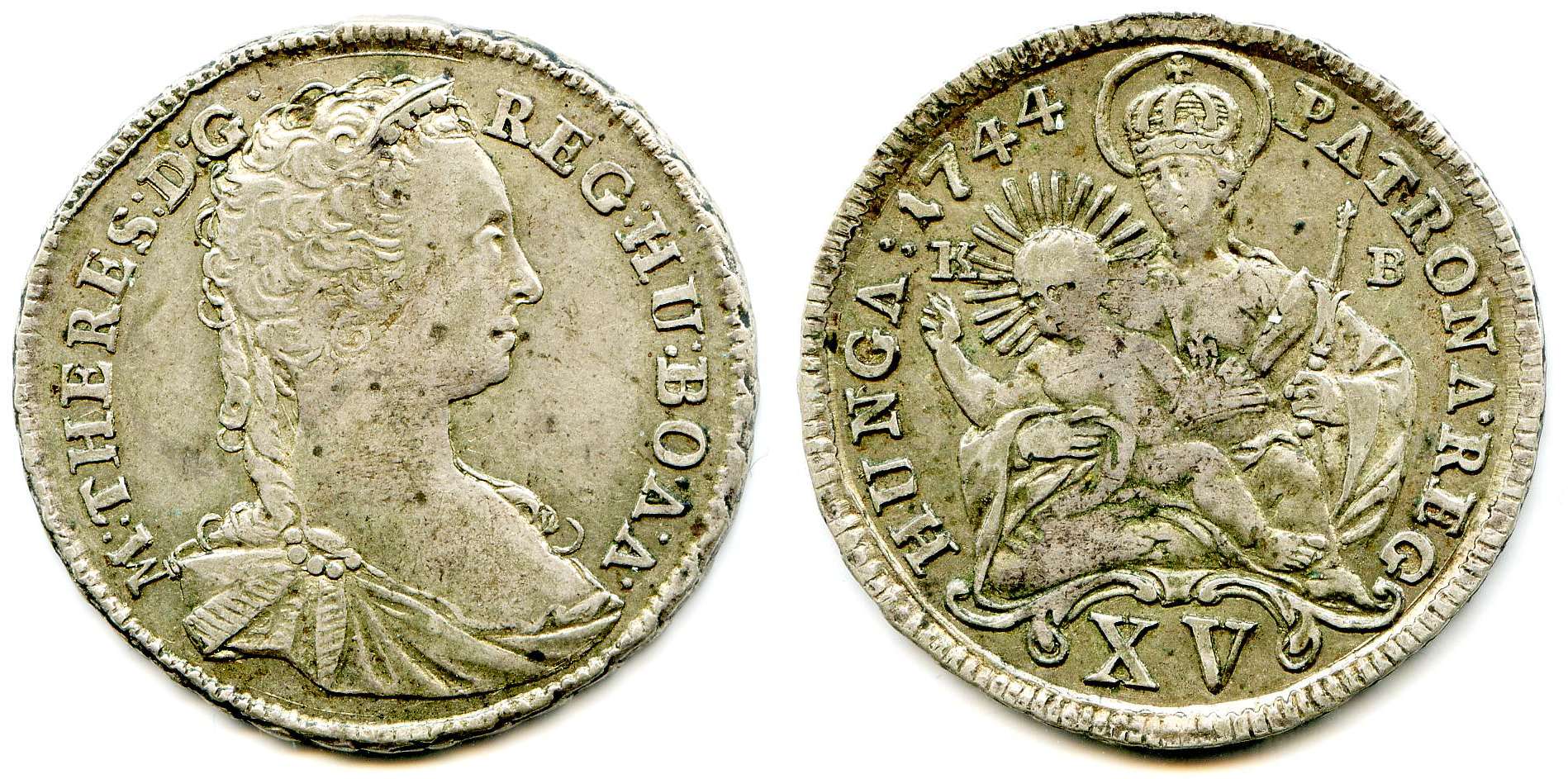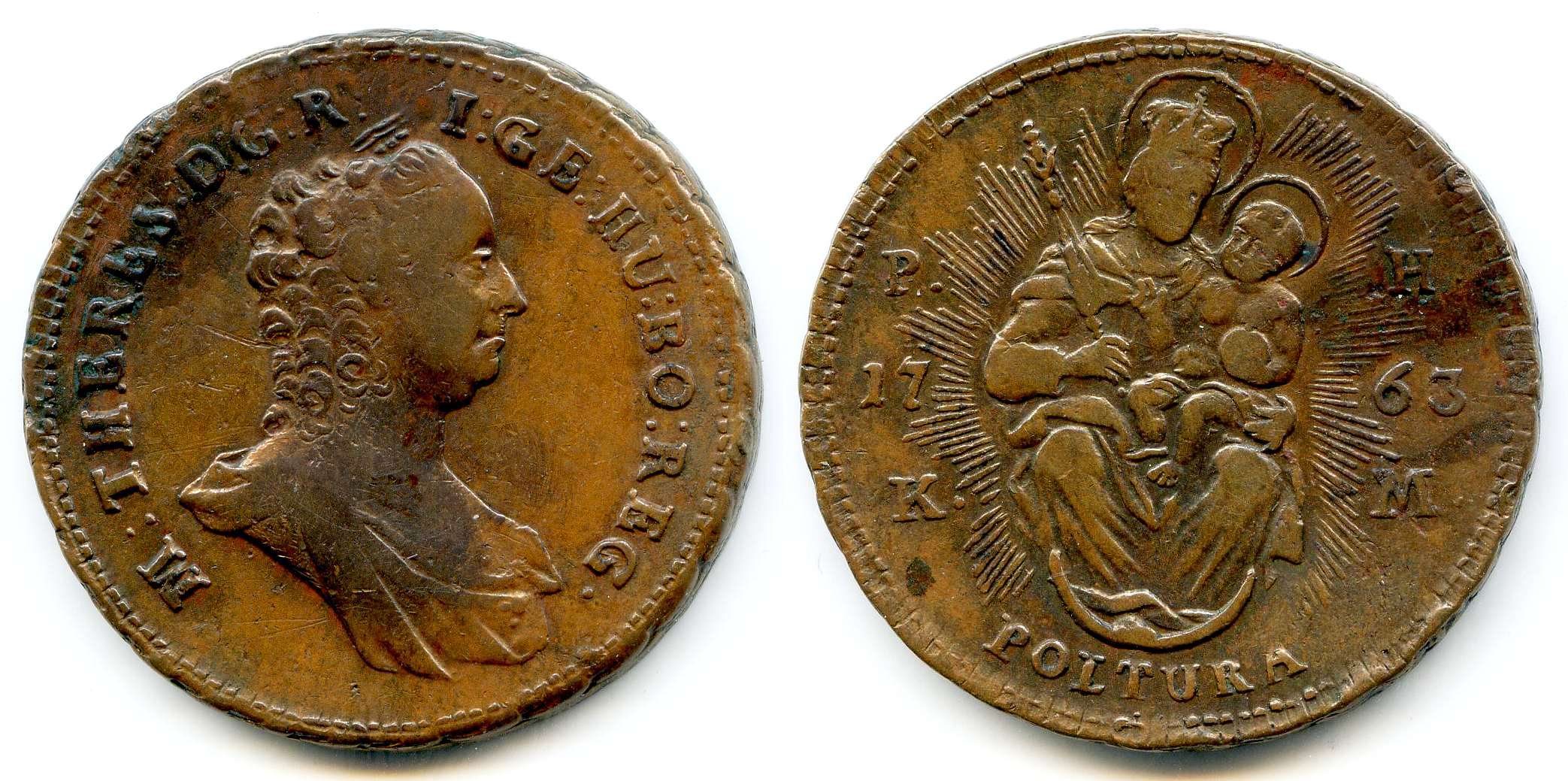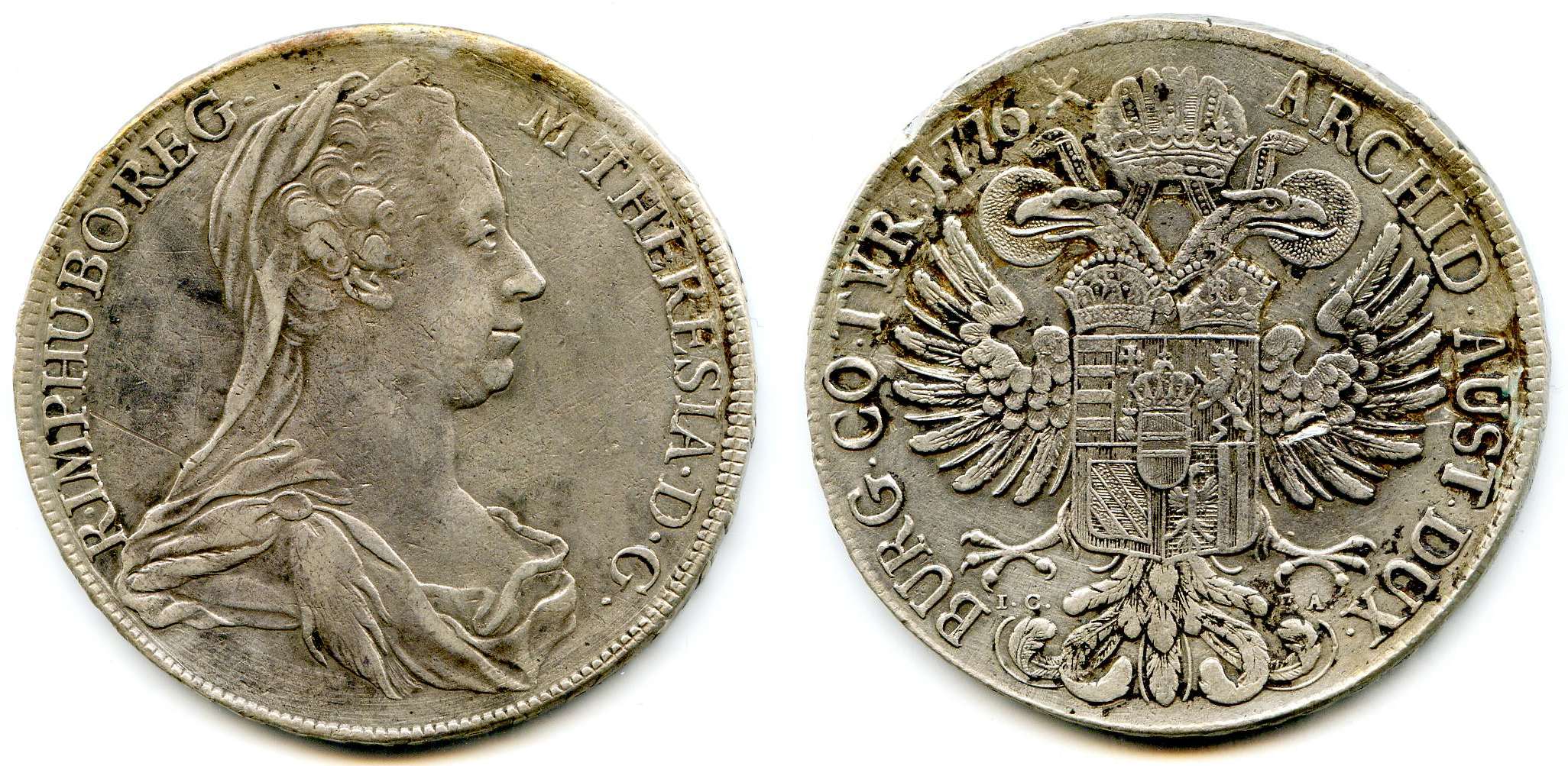Maria Theresa
Born 1717 A.D., Archduchess of Austria and Queen of Hungary and
Bohemia, 1740-80 A.D.

Silver 15 Krajczar, 29 mm, 6.3 grams
Obverse: Maria Theresa
Reverse: Madonna and child
Minted in Kremnitz, Hungary, 1744

Copper 1 Poltura, 31 mm, 17.4 grams
Obverse: Maria Theresa
Reverse: Madonna and child
Minted in Kremnitz, Hungary, 1763

Silver 1 Thaler, 40 mm, 27.4 grams
Obverse: Maria Theresa
Reverse Crowned double-headed eagle with arms on chest.
Minted in Vienna, Austria, 1776.
If you have a question about a similar coin dated 1780, click here.
Maria Theresa was the eldest daughter of Charles VI, Holy Roman Emperor. In preparation for her succession to the throne, Charles made legal and diplomatic arrangements that declared the Habsburg territories indivisible and inheritable by his female issue, arrangements that were formally recognized by all the great European states. When Charles died in 1740, however, his daughter's succession was challenged by several European princes. Frederick II the Great of Prussia quickly annexed the Austrian province of Silesia. By 1741, Bavaria, France, Prussia, Saxony, and Spain were all allied against Maria Theresa in the War of the Austrian Succession. By the war's conclusion, Maria Theresa was unable to regain Silesia. She tried once more unsuccessfully to regain Silesa from Prussia in the Seven Years' War (1756-63).
Under Maria Theresa, there were many significant internal reforms, which reduced the powers and privileges of the nobility. In order to refill the treasury following her costly wars, she abolished the tax exemptions of both the nobility and church. In her political reforms, Maria Theresa followed what she thought to be the interests of the monarchy. An intolerant woman, she abhorred the ideas of the Enlightenment.
Her 10 surviving children included future emperors Joseph II and Leopold II, and Marie Antionette, the ill-fated queen of Louis XVI of France.